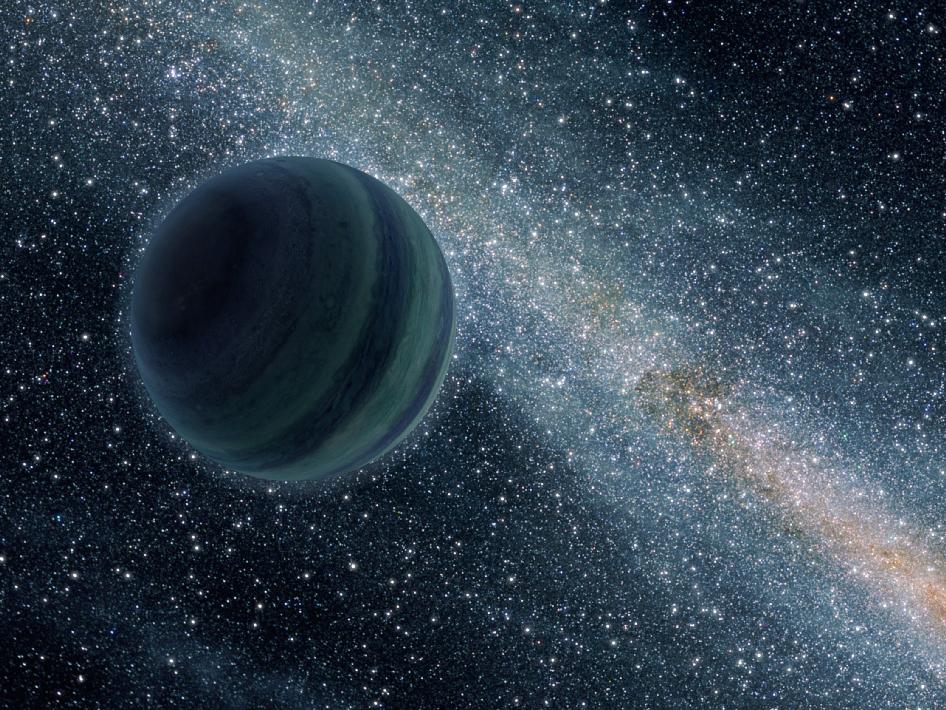Dark compact planets: a new family of astronomical objects? [NOT TRANSLATED]

Artistic representation of a Jupiter-like planet floating freely in space without star. Image: NASA / JPL-Caltech
They would be planets that we have not seen so far, and represent an evidence of the presence of dark matter in our Universe. Dark compact planets constitute a new family of astronomical objects, formed by dark matter and stellar material from compact stars, such as neutron stars and white dwarfs.
The authors of this theoretical prediction are Laura Tolós, researcher Ramon y Cajal at Institute of Space Sciences (IEEC-CSIC), and Professor Juergen Schaffner-Bielich, University of Frankfurt. The study, just published in Physical Review D, analyses the stability and characteristics of these new astronomical objects with dark matter inside.
Dark Matter: open questions
Astrophysical and cosmological observations reveal that most of the mass in the universe is dark matter, i.e. a matter which cannot detect but whose existence is inferred from gravitational effects it exerts on visible matter.
The nature and characteristics of dark matter are still unknown, although they have devoted great efforts from the theoretical and observational point of view. Among the indirect methods of search and analysis of dark matter highlights the study of the effects of dark matter in the properties and evolution of neutron stars and white dwarfs.
Dark compact planets: possible new answers
Precisely because the study of these types of stars, researchers launched the hypothesis of a new type of astronomical object that would allow know more about the existence and nature of dark matter. The called dark compact planets would be stable astronomical objects of visible matter from compact stars with dark matter inside. They would have similar mass to Earth or Jupiter (that’s why they have been called planets) and a radius of tens to hundreds of kilometres. That is, a very small radius for this mass and therefore very compact bodies.
Researchers have predicted that the formation of these planets compact is due to the gravitational pull exerted on stellar material by “lumps” of dark matter originated after the Big Bang.
Observation: the next challenge
“The observation of astronomical objects with masses similar to Jupiter or Earth but with unusually small radii would be evidence of its existence,” says Laura Tolós, IEEC-CSIC researcher. But this observation is a major challenge precisely because of the small size of dark compact planets.
The detection could be done through gravitational lensing, widely used in the search for exoplanets (planets outside our solar system). This effect is based on the path of light emitted by a distant star it is modified by the presence of another star, nearby planet, which magnifies its brightness and therefore allows observation thereof.
We will have to wait to see if in the future, observations of exoplanets with very small radii confirm the theoretical predictions about the existence of dark compact planets. [NOT TRANSLATED]
